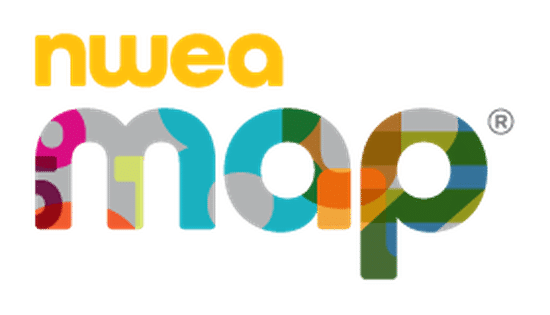
How Many Questions Are There On The MAP Test?
As our education system evolves, competition is becoming fierce. There are different evaluations at every stage throughout your child’s academic life. The MAP test is a huge assessment system to keep track of students’ performances over the years. It is one of the most important tests in your child’s entire education life.
Table of Contents
How Many Questions Are On The MAP Test?
Since the MAP tests span across a student’s education life, the number of questions varies each year. The MAP test is untimed, leaving students with much freedom to take it at their own pace.
There are around 52 questions in each of them. The range stays more or less the same, but in some cases, you may see as few as 39 questions in one section and 55 questions in another.
It all depends on the structure that year. Generally speaking, it should take around an hour to complete the test. Younger students may show greater variance as the gap between their comprehension, and answering skills is huge.
Therefore, you can’t really project the exact number of questions on the MAP test this year but it’s safe to estimate it to be around the “52” benchmark.
What Is The MAP Test?
The MAP Growth Test stands for the Measures of Academic Progress. Designed by the Northwest Evaluation Association (NWEA), the MAP test is a computer-adaptive assessment to monitor students’ academic achievements.
School-aged children from kindergarten to Grade 12 will take the MAP test. Each year’s results are documented for teachers to review.
Schools can utilize the MAP test scores to assist students with varying learning capabilities. Academically excelled students can be taught more advanced topics while those lacking behind can receive more help. Teachers can pinpoint weaker areas to work on and formulate respective education plans for the coming year.
Since the MAP test results are used to indicate the average students’ performance, it has become an important benchmark to rank schools in the area. Teachers and parents want better results so the school gains a more prestigious reputation.
In essence, the MAP test not only affects how the school divides students into different classes but also the possible funding the school receives. Schools with a higher average score tend to do better in public exams and the university enrollment rate.
Thus, they get more funding and scholarship available. The MAP test has a substantial influence on the education system.
What Are The Format And Content Of The MAP Growth Test?
Over the years, the core format of the MAP test. Each section challenges a student’s knowledge in different categories. Ranging from multiple-choice, fill-in-the-blank, and drag-and-drop answers, students must strategically answer the questions.
Their problem-solving skills are accessed at the same time. Some techniques required for the questions may not be instantly obvious to students. They have to work around the corner to arrive at the correct method.
A computer-adaptive assessment means the system will automatically adjust to a student’s academic level as the test progresses. When a student gets the first few questions correct, the questions will be progressively more difficult in the coming sections.
On the other hand, when a student fails to deliver the correct answers or takes too long to answer, the following questions will be easier. The total score of the lower-achieving students will be capped.
The smart system gives a more critical assessment of the student’s overall performance. Each student is evaluated at their current level. It better dissects the learning progress and how the school should adjust its education methods if the gap is too big.
What Are The Different Sections In The MAP Test?
In the MAP test, the core areas are reading, language use, and math. For some grades, usually above Grade 3, general science is included as well.
1. Math
For younger grades, the math section mostly involves visual tools. Students have to count the number of items on the screen and select the right number.
They will also arrange numbers according to their values, compare numbers to see which one is bigger, and do some simple summation calculations. Advanced students will be asked to do a bit more calculations.
Senior students will face more data construction and algebra questions. They have to utilize math formulas strategically for the graphs and figures. Their numerical reasoning skills will be measured.
2. Reading
The reading section tests students’ ability to quickly skim through paragraphs to identify the key messages in the passage. Rephrasing sentences is another common question type to further analyze students’ understanding of the content.
Students need to demonstrate adequate comprehension skills to tackle analysis questions where the answer cannot be directly found in the article.
Every year, the genre changes. Literature reviews, biographies, science fiction, poem, and news article are all possible passages. Students should pay attention to the meaning of each word. Puns are often picked out to assess students’ knowledge of vocabulary.
3. Language Use
It sounds slightly similar to the reading section but language use is much more detailed and literal. The language usage section tests the student’s proficiency in spelling, vocab, and grammar.
Students will have to choose the wrongly spelled words in sentences and select the wrong choices of vocabulary. They will also highlight the incorrect tenses and correct them. Being proficient in English helps students in all other subjects. Thus, the language use section is highly valued.
4. General Science
As mentioned, general science is only applicable to higher-grade students. It involves various concepts surrounding basic physics, biology, and chemistry. General science introduces students to the world around them.
Therefore, the questions are typically related to real-life scenarios. Questions for seniors will also involve calculations whereas, for juniors, there are usually only theory questions.
What Is The Passing Score For The MAP Test?
Results are immediately available once the test is submitted. The test score should be compared to other students in the same school. In general, students should aim to score no less than 50% as that is likely the average.
High achievers that score above 95% could potentially consider skipping a grade with the approval of the school and parents. Low-achieving students, usually below 25%, will be subject to further tests to determine if they can be promoted to the next grade. Or they will be required to attend more tutorials to make up for the lack of progress.
How To Prepare For The MAP Test?
1. Get TestPrep Online
You are probably aware of the importance of getting your child a head start. TestPrep Online has a series of MAP test practices tailored to the specific grade your child is at. The format and structure are the same as the actual MAP test to get your kid familiarized with the system early on.
Many happy students have seen satisfactory improvements with TestPrep Online. It saves parents the nightmare of revising study materials together. A strategic study plan is provided for you to better allocate the time.
2. Revise Class Notes
Aside from the expert resources on TestPrep Online, following school teachers’ suggestions is beneficial. Most teachers know the MAP test inside and out. They have been battling this test with students for years. Sometimes, they are even able to predict the trend and possible topics covered.
Keep your child’s study notes organized. Encourage your child to reach out to the teacher if something is unclear. Some schools arrange after-class tutorials specifically for the MAP test.
You can enroll your kid in them. Forming a good relationship with teachers boosts their self-esteem and problem-solving skills. They are more willing to learn in a supportive environment.
3. No All-nighter
An all-nighter is painful even for adults, let alone children. Kids are rapidly developing physically and mentally. Forcing your kid to study all night will likely impair their critical thinking. They are not able to reason as fast.
Make sure your child is receiving enough breaks between their study sessions. They should stop studying at least two hours before bedtime to get their mind ready for bed. Otherwise, they might have nightmares about answering endless questions.
4. Study With Other Classmates
Studious school culture is a positive influence on your child. Get some of your kid’s classmates over to form a study group. Children can exchange ideas and come up with new methods to simplify the questions.
School-aged children often process new ideas differently. Methods taught at school may not always be useful. Let the kids discover their “hacks” to answer smartly.
Having their peers push them forward will ignite their inner competitiveness to excel together. As a parent, you should foster a healthy study environment for them so everyone can benefit from this learning process.
Summary
Understandably, the MAP test is intense. Having to take it repeatedly every year can pose tremendous mental pressure on your child.
But don’t worry, as long as you can show your kid how to face the test with the correct attitude and skills, they will be the high achiever with impressive progress in a short time. Grab your study guide on TestPrep Online to not miss out on the exclusive tips.
Sarah is an accomplished educator, researcher and author in the field of testing and assessment. She has worked with various educational institutions and organisations to develop innovative evaluation methods and enhance student learning. Sarah has published numerous articles and books on assessment and learning. Her passion for promoting equity and fairness in the education system fuels her commitment to sharing insights and best practices with educators and policymakers around the world.







